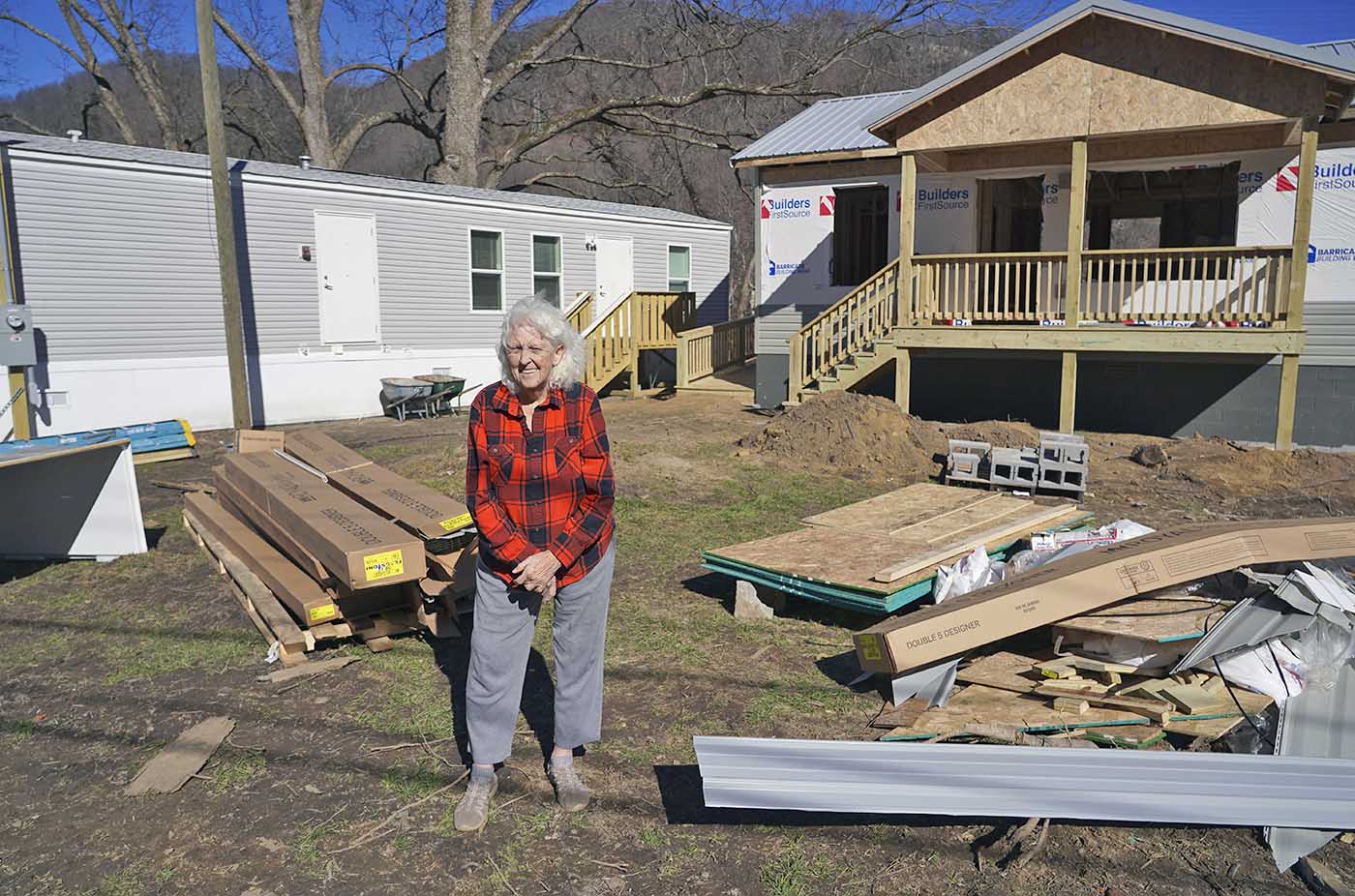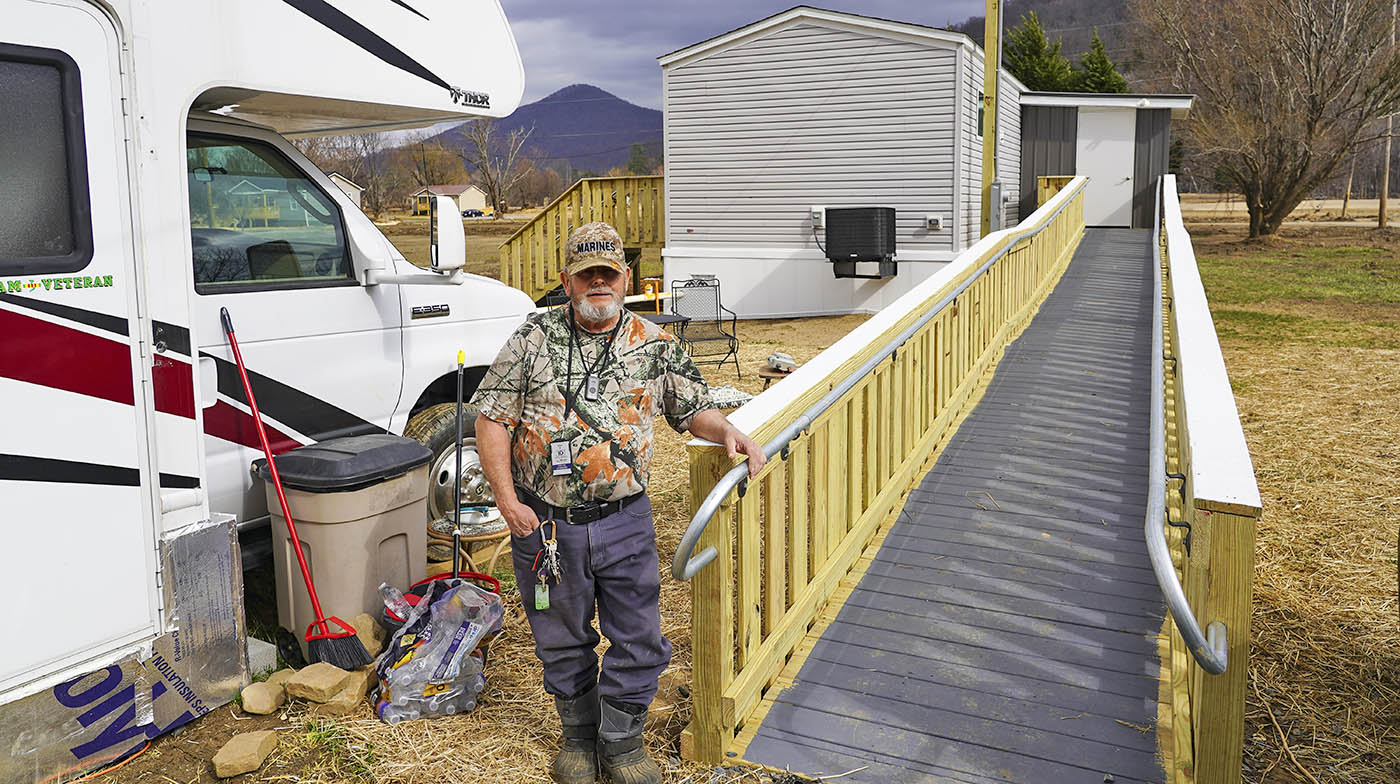In a muddy grove 100 yards from the Nolichucky River, Betty Francis can hear the sounds of progress as her new home takes shape.
Francis was forced to rebuild after Tropical Storm Helene upended the life she knew. Her new place is wired for electricity and plumbing is being installed. She is expected to be able to move in by May 1.
“I never had a house of my own, I’ve always had mobile homes,” Francis said. “I’m going to love it.”
Across Eastern Tennessee, families are rebuilding their lives, one day at a time. The hurricane left a trail of destruction, dumping six inches of rain on already saturated hills and valleys. Floodwaters raced downhill with such a force that rivers overflowed and homes were dislodged from their foundations.
Six eastern counties were hit hardest. The Pigeon River at Newport crested at 28.9 feet, the highest ever recorded. The Nolichucky River washed away bridges and submerged entire neighborhoods and farmlands. Floodwaters poured over the 111-year-old Nolichucky Dam near Greeneville at 1.3 million gallons per second – twice the water flow of Niagara Falls. The dam itself remained intact but sustained significant damage. Dozens of people were rescued by helicopter from the roof of Ballad Health, a small hospital in the southern Appalachian Mountains.
At 77, Francis is starting a new chapter of her life without her husband, Sydney, who passed away days after the storm swept in. Without a television, she was in her home administering hospice care to Sydney, unaware of the rising floodwaters until a neighbor sounded the alarm. The couple was helped to safety.
Floodwaters knocked their mobile home off its foundation. The family found it lodged between two trees in the front yard. A neighbor’s basement ended up on the sidewalk. Francis’ son-in-law slogged through mud at least a foot deep to retrieve what he could from their home.
“I didn’t go back that first time. I didn’t want to see it,” Francis said, her voice trembling. “I lost the most important thing that was there – my picture albums. You can’t replace baby pictures … and I had a scrapbook from when my son died.”
For four months, she stayed with her daughter, applied for FEMA assistance and tried to put her life back together. In February, she moved back to her property and is living in temporary housing provided by FEMA.

Another survivor, Donald Cutshaw, lives in FEMA housing on the property he owns while plans are made for his new home.
The tropical storm’s swirling current blew in the glass door to Cutshaw’s patio and sucked him into the raging waters. He was hanging onto a porch handrail and trying to hold tight to his dog, Little Bit, when searchers hauled them into a swift water rescue boat.
“I could hear my neighbors hollering, ‘Donnie, Donnie, hold on. We love you,’” he recalled. “I didn’t know the rescuers were there. … I had my peace with the good Lord. I was ready to go.”
Cutshaw, who turns 74 in May, was hospitalized for two weeks. Neighbors helped him apply for FEMA assistance and he moved back to his property in February.
In Washington County, where Francis and Cutshaw live, only 34 families had flood insurance when Helene hit. To address the survivor needs, the Tennessee Emergency Management Agency opened multi-agency resource centers, helping to coordinate relief efforts, available resources and federal assistance.
The National Flood Insurance Program has paid $14 million in claims to policy holders that reported Helene damages. FEMA is helping with insured costs, including funding for repairs and major rebuilding.
Beyond insurance claims, FEMA has approved more than $86 million to help Helene survivors and communities in Tennessee.
Voluntary organizations, neighbors and others are helping survivors in ways big and small. After his hospitalization, Cutshaw spent three months living in a camper donated by a church. Francis also got help from the American Red Cross and The Dollywood Foundation. The organization Appalachia Services Project is building the homes for Cutshaw and Francis.
FEMA is also working with agriculture commissioners across the south, long-term recovery groups and universities, while providing technical assistance to understaffed rural counties and local governments.
While all these organizations come together to support survivors like him, Cutshaw continues to give back to his community.
“I still volunteer at the U.S. Department of Veterans Affairs hospital,” Cutshaw said. “I talk to the veterans doing cancer chemo. I tell them a few jokes, give ’em smiles.”
As he and his community work to recover, Cutshaw heals through helping others.



